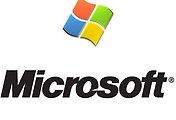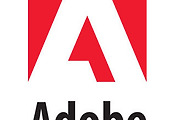금일 새벽 인터넷익스플로러(Internet Explorer)의 제로데이 취약점이 발견되었다.
이번 제로데이가 위험한 이유는 IE 6,7,8 모두 해당 된 다는 점이다.
아직 샘플이 수집되지 않아 코드를 확인 해 볼 수는 없지만, Symantec에서는 벌써 취약점을 이용한 메일을 확인했다고 한다.
- 취약점 내용
Executive Summary
Microsoft is investigating new, public reports of a vulnerability in all supported versions of Internet Explorer. The main impact of the vulnerability is remote code execution. This advisory contains workarounds and mitigations for this issue.
The vulnerability exists due to an invalid flag reference within Internet Explorer. It is possible under certain conditions for the invalid flag reference to be accessed after an object is deleted. In a specially-crafted attack, in attempting to access a freed object, Internet Explorer can be caused to allow remote code execution.
At this time, we are aware of targeted attacks attempting to use this vulnerability. We will continue to monitor the threat environment and update this advisory if this situation changes. On completion of this investigation, Microsoft will take the appropriate action to protect our customers, which may include providing a solution through our monthly security update release process, or an out-of-cycle security update, depending on customer needs.
We are actively working with partners in our Microsoft Active Protections Program (MAPP) and our Microsoft Security Response Alliance (MSRA) programs to provide information that they can use to provide broader protections to customers. In addition, we are actively working with partners to monitor the threat landscape and take action against malicious sites that attempt to exploit this vulnerability.
Microsoft continues to encourage customers to follow the "Protect Your Computer" guidance of enabling a firewall, applying all software updates and installing anti-virus and anti-spyware software. Additional information can be found at Security at home.
Mitigating Factors:
| • |
Data Execution Prevention (DEP) helps protect against attacks that result in code execution and is enabled by default in Internet Explorer 8 on the following Windows operating systems: Windows XP Service Pack 3, Windows Vista Service Pack 1, Windows Vista Service Pack 2, and Windows 7.
|
| • |
Protected Mode in Internet Explorer on Windows Vista and later Windows operating systems helps to limit the impact of the vulnerability as an attacker who successfully exploited this vulnerability would have very limited rights on the system. An attacker who successfully exploited this vulnerability on Internet Explorer 7 or Internet Explorer 8 could gain the same user rights as the local user. Users whose accounts are configured to have fewer user rights on the system could be less affected than users who operate with administrative user rights.
|
| • |
In a Web-based attack scenario, an attacker could host a Web site that contains a Web page that is used to exploit this vulnerability. In addition, compromised Web sites and Web sites that accept or host user-provided content or advertisements could contain specially crafted content that could exploit this vulnerability. In all cases, however, an attacker would have no way to force users to visit these Web sites. Instead, an attacker would have to convince users to visit the Web site, typically by getting them to click a link in an e-mail message or Instant Messenger message that takes users to the attacker’s Web site.
|
| • |
By default, all supported versions of Microsoft Outlook, Microsoft Outlook Express, and Windows Mail open HTML e-mail messages in the Restricted sites zone, which disables script and ActiveX controls, removing the risk of an attacker being able to use this vulnerability to execute malicious code. If a user clicks a link in an e-mail message, the user could still be vulnerable to exploitation of this vulnerability through the Web-based attack scenario.
|
Issue References
Affected and Non-Affected Software
This advisory discusses the following software.
Windows XP Service Pack 3
|
Internet Explorer 6
|
Windows XP Professional x64 Edition Service Pack 2
|
Internet Explorer 6
|
Windows Server 2003 Service Pack 2
|
Internet Explorer 6
|
Windows Server 2003 x64 Edition Service Pack 2
|
Internet Explorer 6
|
Windows Server 2003 with SP2 for Itanium-based Systems
|
Internet Explorer 6
|
Windows XP Service Pack 3
|
Internet Explorer 7
|
Windows XP Professional x64 Edition Service Pack 2
|
Internet Explorer 7
|
Windows Server 2003 Service Pack 2
|
Internet Explorer 7
|
Windows Server 2003 x64 Edition Service Pack 2
|
Internet Explorer 7
|
Windows Server 2003 with SP2 for Itanium-based Systems
|
Internet Explorer 7
|
Windows Vista Service Pack 1 and Windows Vista Service Pack 2
|
Internet Explorer 7
|
Windows Vista x64 Edition Service Pack 1 and Windows Vista x64 Edition Service Pack 2
|
Internet Explorer 7
|
Windows Server 2008 for 32-bit Systems and Windows Server 2008 for 32-bit Systems Service Pack 2
|
Internet Explorer 7
|
Windows Server 2008 for x64-based Systems and Windows Server 2008 for x64-based Systems Service Pack 2
|
Internet Explorer 7
|
Windows Server 2008 for Itanium-based Systems and Windows Server 2008 for Itanium-based Systems Service Pack 2
|
Internet Explorer 7
|
Windows XP Service Pack 3
|
Internet Explorer 8
|
Windows XP Professional x64 Edition Service Pack 2
|
Internet Explorer 8
|
Windows Server 2003 Service Pack 2
|
Internet Explorer 8
|
Windows Server 2003 x64 Edition Service Pack 2
|
Internet Explorer 8
|
Windows Vista Service Pack 1 and Windows Vista Service Pack 2
|
Internet Explorer 8
|
Windows Vista x64 Edition Service Pack 1 and Windows Vista x64 Edition Service Pack 2
|
Internet Explorer 8
|
Windows Server 2008 for 32-bit Systems and Windows Server 2008 for 32-bit Systems Service Pack 2
|
Internet Explorer 8
|
Windows Server 2008 for x64-based Systems and Windows Server 2008 for x64-based Systems Service Pack 2
|
Internet Explorer 8
|
Windows 7 for 32-bit Systems
|
Internet Explorer 8
|
Windows 7 for x64-based Systems
|
Internet Explorer 8
|
Windows Server 2008 R2 for x64-based Systems
|
Internet Explorer 8
|
Windows Server 2008 R2 for Itanium-based Systems
|
Internet Explorer 8
|





댓글